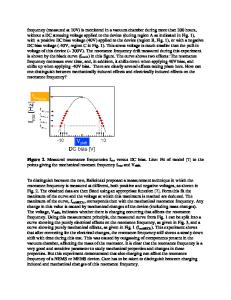Origami MEMS and NEMS
- PDF / 778,541 Bytes
- 7 Pages / 585 x 783 pts Page_size
- 6 Downloads / 354 Views
Introduction Origami, the ancient art of paper folding that is now practiced in many cultures, broadly refers to a set of techniques to transform planar sheets into three-dimensional (3D) structures. Variants of traditional origami include kirigami, which involves cutting and folding, and pop-up art, which involves gluing, cutting, and folding. Over the last two decades, this comprehensive set of techniques has inspired the transformation of patterned thin films composed of materials other than paper into 3D functional microelectromechanical (MEMS) and nanoelectromechanical systems (NEMS). There are a number of advantages in this approach especially relevant to the science and engineering of small functional devices. First, the assembly paradigm is compatible with very well-established inherently planar lithographic techniques such as photo, e-beam, and nanoimprint lithography. Hence, in principle, any two-dimensional (2D) pattern, including those with nanometer-sized, high-fidelity features, can be popped up into a 3D structure. Second, these assembly processes can be applied to a wide range of materials ranging from devicegrade single-crystal silicon to cells and biomaterials. Further, folding can be performed in a hands-free and wire-free manner enabling high-throughput and parallel assembly, which is important from a manufacturing perspective. Additionally,
a number of adhesive contacts, mechanical latches, and fluidic joints have been developed to self-seal seams after 3D assembly, and consequently, rigid folded structures can be reliably fabricated. Finally, theoretical advances in mechanics, geometry, origami mathematics, and biomimetics have uncovered design rules for the high-yield self-assembly of complex 3D structures by folding. Consequently, origami assembly approaches have moved from intellectual curiosities into the mainstream of micro- and nanoscale science and engineering. In contrast to previous reviews or broad relevance to this area of origami fabrication and assembly,1–9 in this article, we focus on recent advances in functional origami MEMS and NEMS devices.
Folding versus self-folding Techniques used to achieve macroscale folding by hand, tweezers, or machines can be challenging to implement at small size scales. Nevertheless, manual folding and popping up of microfabricated metals, polysilicon, and printed ink patterns have been pushed to the limit to realize assembly of complex 3D structures such as towers, ceramic birds, supercapacitors, and lightweight materials (see Figure 1a–d).10–16 Sequential folding has been achieved by attaching electrically actuated
John Rogers, Department of Materials Science and Engineering, Frederick Seitz Materials Research Laboratory, University of Illinois at Urbana–Champaign, USA; [email protected] Yonggang Huang, Department of Civil and Environmental Engineering, Department of Mechanical Engineering, Northwestern University, USA; [email protected] Oliver G. Schmidt, Institute for Integrative Nanosciences, Leibniz Institute for Solid State and Mate
Data Loading...











